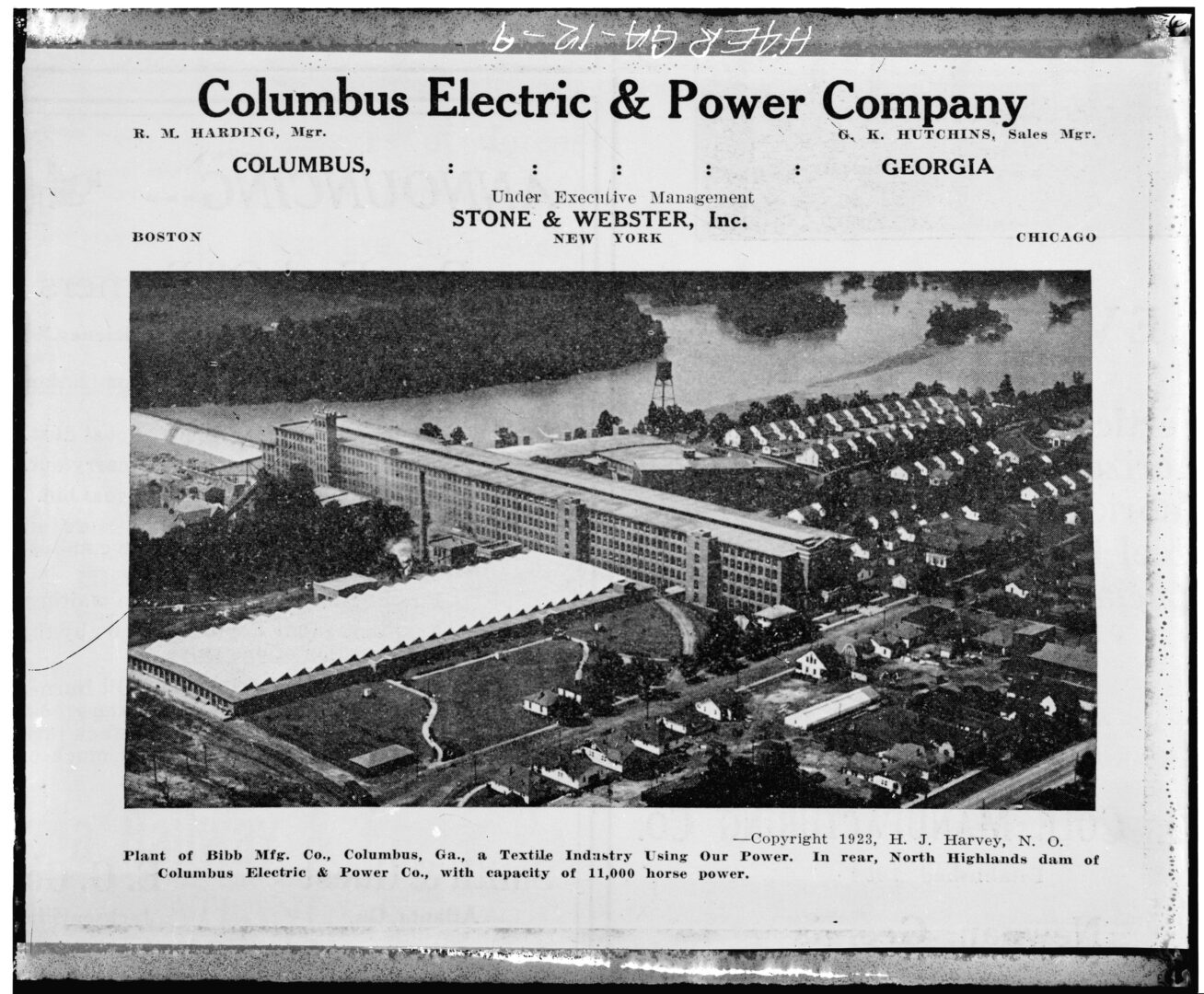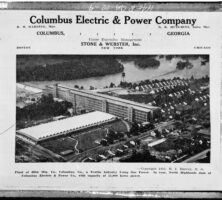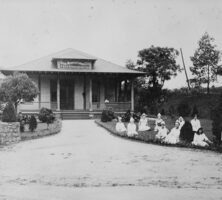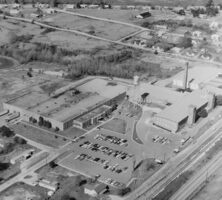Bibb Manufacturing Company, an important part of Georgia’s cotton and textile industry for more than a century, became one of the state’s largest employers by the mid-1950s before its decline and sale in 1998.
Early History
Bibb Manufacturing Company, known for its quality textile products, originated in Macon in 1876. Named for Bibb County, the enterprise was initiated in 1876 by three cotton merchants, Hugh Moss Comer of Savannah and brothers Major John F. Hanson and I. Newton Hanson of Macon.
The merchants set up their first factory for yarn production in a freight warehouse formerly used by the Central of Georgia Railway. Comer served as president and Major Hanson as secretary and treasurer. In 1878 they acquired their second mill by purchasing a former cotton factory, Macon Manufacturing Company.
Company Growth
By 1895 the Bibb Manufacturing Company employed 700 workers and consumed 20,000 bales of cotton annually. By 1898 it had acquired additional Georgia mills: Macon Knitting Company, Taylor Manufacturing near Reynolds, the Cordele Manufacturing Company, and two already established mills at Porterdale.
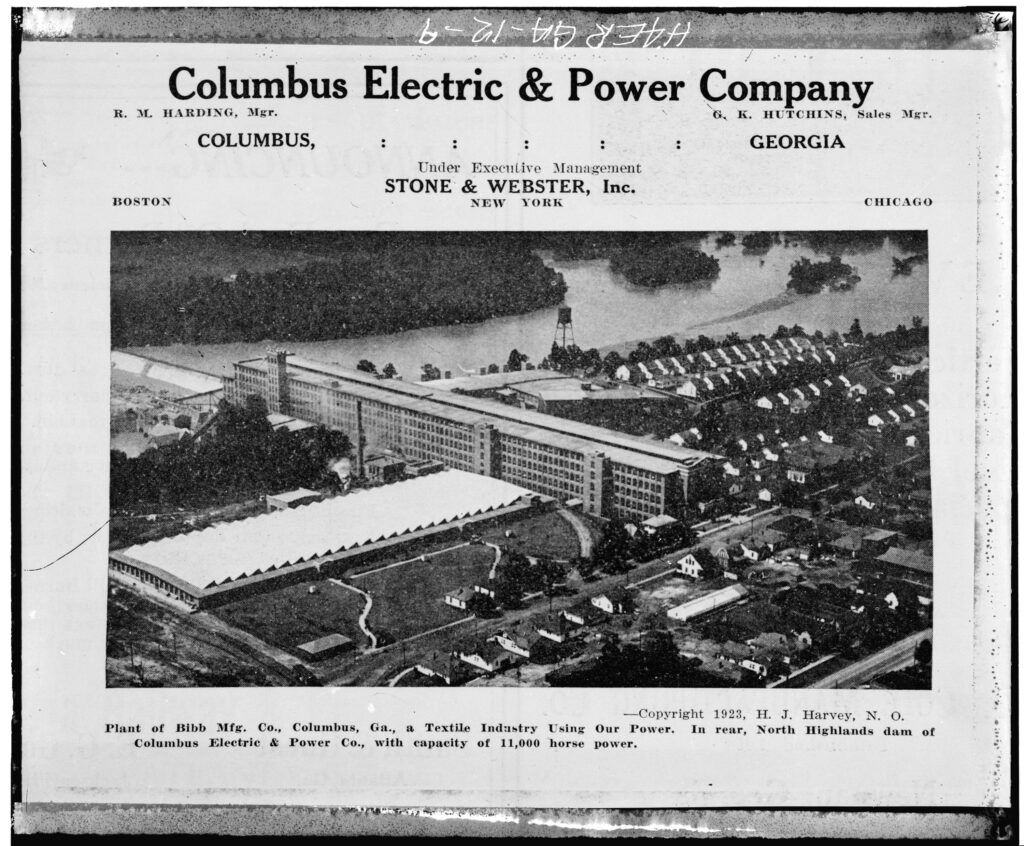
Courtesy of Library of Congress, Prints and Photographs Division
In 1900 Comer died, and Major Hanson succeeded him as president. That year Bibb Manufacturing purchased a dam site on the Chattahoochee River near Columbus from the Columbus Power Company. A new mill was built called the Columbus Mill; the surrounding community was named “Bibb City.” In time this facility would become the largest cotton mill in the country. Another new factory opened in 1905, the Payne Mill, located in Vineville. It would be the last outside acquisition made by Bibb Manufacturing for thirty-two years. Hanson served as president until 1908. During his years with Bibb, he was also named head of both the Central of Georgia Railway and the Ocean Steamship Company.
Major Hanson was succeeded by G. Gunby Jordan of Columbus. By 1911 Bibb Manufacturing advertised itself as “one of the largest and most important enterprises in the South.” At that point Bibb owned nine factories in Georgia, four of which were located in Macon. E. T. Comer, the younger brother of Hugh Comer, took over as president in 1913 and remained in the position through World War I (1917-18). Three years later, in 1916, Bibb expanded further by building the Osprey Mill in Porterdale.
Mill Communities
As the company grew, so did the surrounding mill communities. Bibb provided company housing, churches, and schools; other structures included swimming pools, auditoriums, and gymnasiums. By the 1920s each of the Bibb communities also had an on-site social worker who implemented clubs, athletic programs, and medical care.
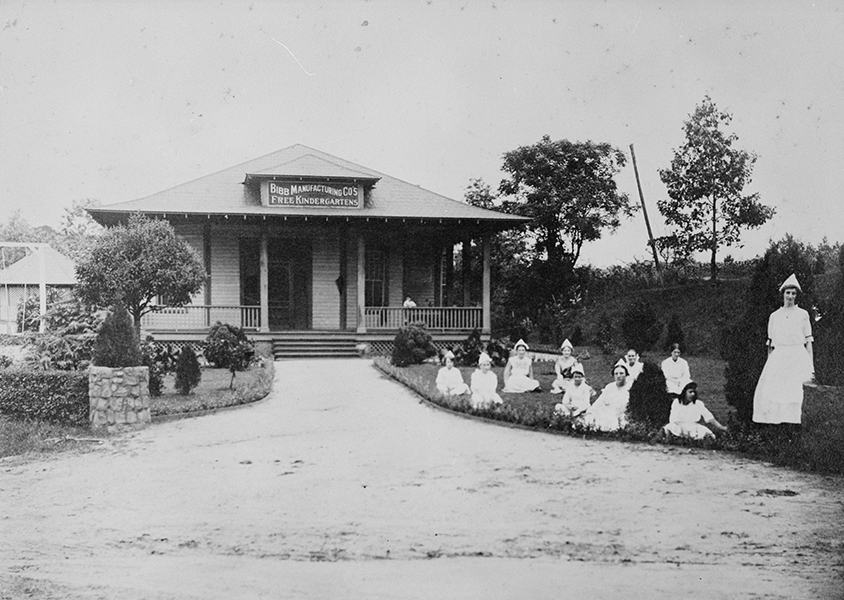
Courtesy of Georgia Archives.
America’s involvement in World War I proved profitable for the company. In 1919 William D. Anderson, who had started at Bibb Manufacturing as a salesman in 1898, became president. He remained in charge for the next twenty-eight years.
Depression Era
Like mills all over the South, Bibb experienced problems and worker unrest with the onset of the Great Depression. In 1934 there was a general textile strike that involved thousands of workers. At the time Anderson was also president of the American Cotton Manufacturer’s Association, which supported mill owners. But he also felt a responsibility to his loyal employees. Anderson called in the National Guard to stand watch over Bibb mills during the strike. This action locked out strikers and kept the mills from unionizing.
In 1937 Bibb acquired another Columbus mill, the Meritas Mill, and renamed it the Anderson Mill. During World War II (1941-45) the company was the largest war-industry producer in Georgia. William Anderson retired in 1947, but Bibb continued to grow under his successor, Charles Hertwig. In the next decades the company acquired more mills in Georgia, including the Forsyth Mill, the Bellvue Mill (Macon), the Arnall and Arnco mills in Coweta County, Plant Camilla near Juliett, Plant Laurel near Potterville, and two additional plants in Monroe County. By 1966 Bibb had fourteen mills in operation.
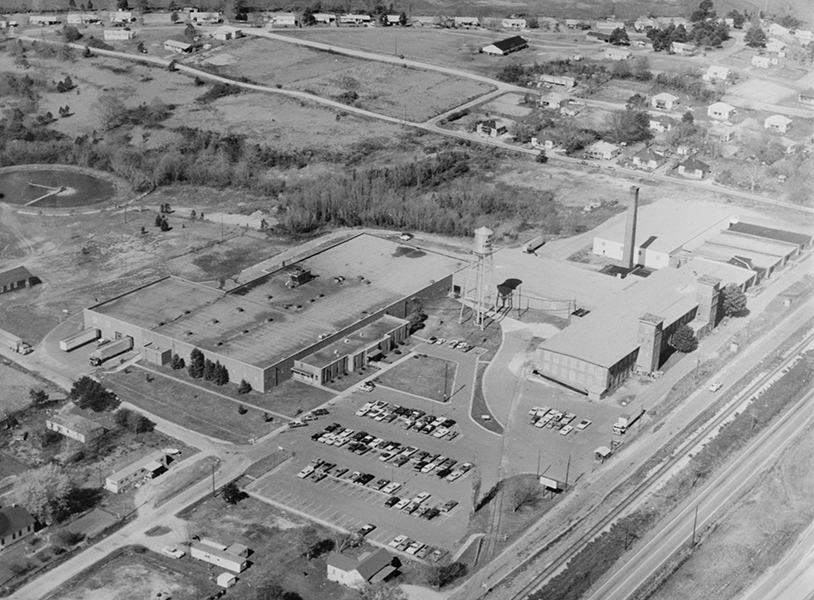
Courtesy of Georgia Archives.
Later Years
In 1956 Robert Train, grandson of Hugh Comer, was appointed president. By this time textile mills all over the South were faltering. Bibb had acquired additional factories in other states but began to sell its company housing in the 1960s. By 1970, when William S. Manning became president, some of the factories were put up for sale. The succeeding decades saw more closures for Bibb. In 1996, under CEO Michael Fulbright, the Bibb Companies went through bankruptcy reorganization. Unable to recover economically, the company was sold in 1998 to the Dan River Corporation of Virginia.
The mill communities, especially Bibb City, were affected by the closures. In 2000 Bibb City ceased to be an independent community, merging with the city of Columbus.
Through its many products, employees, and mill communities, Bibb, known as “the first name in textiles,” helped to shape Georgia during its many years of operation in the state.






